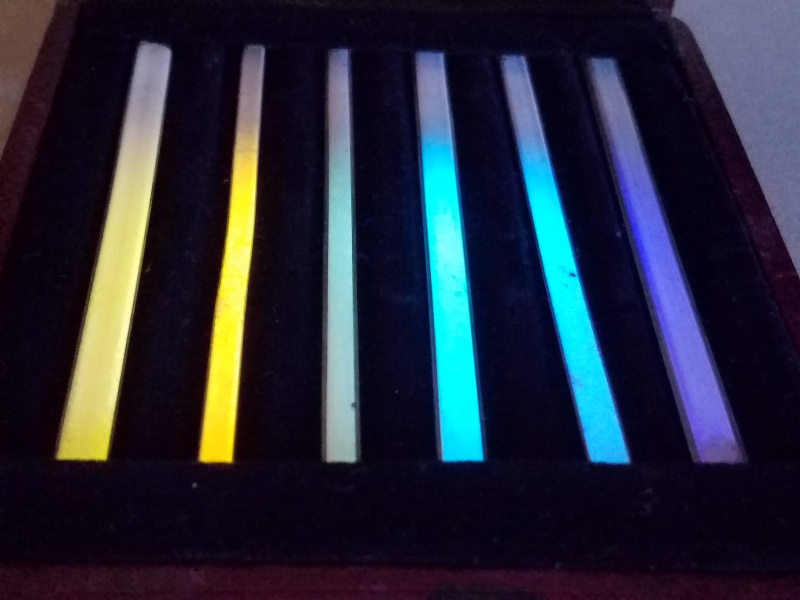Difference between revisions of "Excitation Emission"
Jump to navigation
Jump to search
| Line 1: | Line 1: | ||
[[File:20180201 161547.jpg|800px|thumb|left|Unknown fluorescent material]] | [[File:20180201 161547.jpg|800px|thumb|left|Unknown fluorescent material]] | ||
| − | [[File:graph1.png| | + | [[File:graph1.png|600px]] |
| − | [[File:graph2.png| | + | [[File:graph2.png|600px]] |
In this project, different phosphorescent tubes were used , every tube has a different emission wavelength. As the source of light (UV lamp) was directed into the tube, every tube emitted a wavelength and it was recorded using the UV-probe. The UV lamp that was used had two different excitation wavelength, however the wavelength that was used is at 365 nm. The tubes had sort of a phosphorescent source which make them eligible to be used to detect the emission light. | In this project, different phosphorescent tubes were used , every tube has a different emission wavelength. As the source of light (UV lamp) was directed into the tube, every tube emitted a wavelength and it was recorded using the UV-probe. The UV lamp that was used had two different excitation wavelength, however the wavelength that was used is at 365 nm. The tubes had sort of a phosphorescent source which make them eligible to be used to detect the emission light. | ||
Revision as of 20:05, 8 February 2018
In this project, different phosphorescent tubes were used , every tube has a different emission wavelength. As the source of light (UV lamp) was directed into the tube, every tube emitted a wavelength and it was recorded using the UV-probe. The UV lamp that was used had two different excitation wavelength, however the wavelength that was used is at 365 nm. The tubes had sort of a phosphorescent source which make them eligible to be used to detect the emission light.


